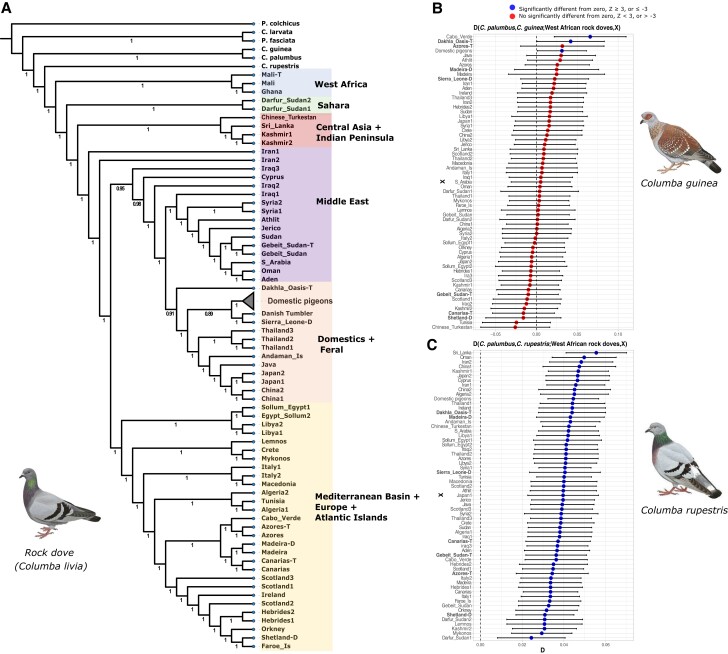Fig. 3.
Phylogenetic relationships among wild and domesticated pigeons. a) NJ tree based on genomic pairwise-distances. Branch length was disregarded in the tree representation (see also supplementary fig. S5, Supplementary Material online). Bootstrap values are shown next to each internal node. Different colors indicate the main geographical regions. The domestic pigeon breeds are shown as a collapsed clade. b and c) D-statistic analyses testing the possibility of hybridization in the West African rock doves that could explain its basal placement in the tree. b) D-statistic test in the form D (C. palumbus, C. guinea; West African rock doves, X), where C. palumbus has been used as an outgroup, all West African rock doves are grouped in a single population, and X represents all other rock doves and domestic pigeons in the dataset. c) D-statistic of the form D (C. palumbus, C. rupestris; West African rock doves, X) testing for hybridization between rock doves and its sister species C. rupestris. Horizontal bars show 3 standard errors estimated through a block jackknife approach. Tests with a resulting |Z-score|>3 were considered statistically significant.

